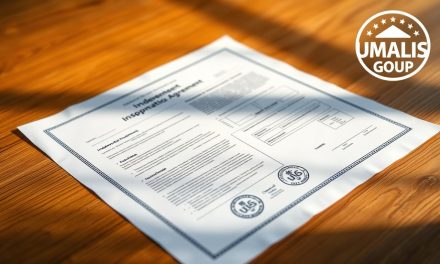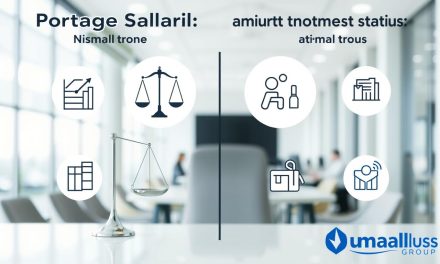Only 13% of employees report real engagement in their work, so companies must rethink how roles are designed. Modern strategies go beyond raises and focus on giving people more autonomy, clearer feedback, and meaningful responsibility.
This guide introduces a friendly, practical approach that helps staff feel valued through smarter role design. It shows how added variety and control create purpose, boost motivation, and lift job satisfaction.
Leaders and HR will find a clear path from theory to action. You will learn how these changes improve trust between managers and teams and how they drive better outcomes across the company and organization.
Practical examples and France-focused notes ensure cultural fit and realistic steps for local managers. Read on to move from understanding to concrete actions that make work more meaningful and performance more consistent.
Table of Contents
Key Takeaways
- Low engagement means it’s time for smarter role design, not just pay increases.
- Giving employees autonomy and feedback helps them feel valued and boosts motivation.
- Clear steps will show differences from simple enlargement and how to increase job satisfaction.
- Real examples and metrics help HR and line managers apply ideas quickly.
- The guide respects French workplace norms and focuses on sustainable results.
What Is Job Enrichment? A Clear Definition for Today’s Workplace
Making roles richer means adding meaningful responsibility and space to choose how work gets done. Job enrichment upgrades a role by giving employees more autonomy, responsibility, and task variety so work feels more purposeful.
Meaningful work, autonomy, and responsibility at the core
Core ingredients are simple: let employees choose methods, own outcomes, and receive steady feedback. This is not piling on more tasks without depth. It is about thoughtful control within clear boundaries.
Why “more pay” isn’t enough to drive motivation
Compensation fixes basic needs, but lasting motivation grows from recognition, achievement, and chances to build new skills. When people see progress and gain real responsibility, job satisfaction and performance rise.
« Intrinsic motivators — recognition, growth, and ownership — drive deeper engagement than pay alone. »
- Autonomy: decide how to approach tasks within agreed guardrails.
- Responsibility: accountability for outcomes that matter.
- Variety: use different skills so the role stays engaging.
- Feedback: regular coaching to help the role and the employee evolve.
| Feature | What it changes | Outcome for employees |
|---|---|---|
| Autonomy | Choice of methods and tools | Stronger sense of control and ownership |
| Responsibility | Clear outcome ownership | Higher engagement and accountability |
| Task variety | Different activities using varied skills | Improved learning and satisfaction |
| Structured feedback | Regular, actionable input | Faster skill growth and better role fit |
The Theory Behind Job Enrichment: Herzberg’s Two-Factor Lens
Herzberg’s model separates the basics that stop complaints from the factors that actually inspire people to excel. In plain terms, hygiene factors (pay, rules, workspace, supervision) prevent dissatisfaction but do not create true satisfaction.
Motivators are different: recognition, achievement, growth, and responsibility spark pride and deeper engagement. When these motivators are built into a role, employees feel energized and perform better.
Hygiene factors vs. motivators: what actually drives satisfaction
Hygiene stops complaints. Motivators build commitment. Focus first on decent basics, then layer in meaningful responsibility and chances to grow.
Five core job characteristics
- Skill variety — broadens the skills used and keeps work fresh.
- Task identity — ownership from start to finish.
- Task significance — clarity on impact.
- Autonomy — freedom to choose methods.
- Feedback — timely input that guides growth.
« Link decisions to outcomes and employees will take pride in higher-quality work. »
Quick example: redesign a role so one employee owns a process slice, gets direct customer feedback, and sets priorities. This links responsibility to visible outcomes and supports skills growth.

| Characteristic | What it changes | Practical result |
|---|---|---|
| Skill variety | Uses more skills | Less stagnation, more growth |
| Autonomy | Decision control | Faster solutions, higher ownership |
| Feedback | Regular guidance | Quicker learning, better fit |
Managers can audit roles with the five areas and apply small tweaks. For a simple checklist, see a short career enrichment checklist that fits French teams and legal norms.
Job Enrichment vs Job Enlargement: Depth Over Breadth
A few extra tasks can mask boredom, but deeper responsibility changes how people engage. Enlargement adds similar-level duties to create variety without adding complexity or decision power.
Enrichment, by contrast, increases role depth. It gives employees autonomy, higher responsibilities, and more control over outcomes. That shift builds motivation and long-term growth.
Task variety versus decision-making depth
Enlargement: add channels, more packing steps, or extra shifts. It changes volume.
Enrichment: grant authority to resolve complaints, manage inventory, or propose process improvements. It changes ownership and outcomes.
Practical examples to spot the difference
- Customer service: adding email plus phone is enlargement; authorizing resolutions is enrichment.
- Warehouse: extra packing steps is enlargement; control of inventory cycles is enrichment.
« If the goal is higher engagement and measurable results, choose depth over simple task stacking. »
Manager cue: use enlargement to balance loads; choose enrichment to boost satisfaction and performance. Combine both thoughtfully.
For a short checklist to redesign roles in France, see a practical career enrichment checklist.
Why Job Enrichment Matters Now: Engagement, Satisfaction, and Productivity
With only 13% of staff truly engaged, leaders must act fast to make daily work feel meaningful again.
Engaged employees who find purpose are about 21% more productive. That gain shows why redesigning roles to add autonomy, clear feedback, and recognition pays off.

Retention, attendance, and commitment
When people see real paths to grow skills and responsibilities, turnover falls. Fewer departures cut hiring and onboarding costs.
Meaningful, well-structured work also lowers absenteeism. Employees show up more when their contributions matter.
Stronger communication and future leaders
Enriched roles boost coaching and sharing between managers and teams. This improves decision speed and execution across the organization.
« A redesigned role with end-to-end ownership can cut rework and lift customer satisfaction. »
| Benefit | What changes | Impact |
|---|---|---|
| Productivity | More autonomy + feedback | Up to 21% uplift in output |
| Retention | Clear development paths | Lower turnover, reduced hiring costs |
| Succession | Broader responsibilities | Easier identification of future leaders |
Link enrichment goals to company priorities and track outcomes. For practical steps on boosting employee satisfaction, see employee satisfaction advice.
Common Barriers to Job Enrichment—and How to Overcome Them
Fear of extra tasks and unclear control often blocks even the best redesign ideas. Resistance usually comes from uncertainty about workload and decision limits. Address this by rolling out changes slowly and involving employees early.
Resistance and workload concerns
Start small. Use short pilots with defined time windows to test ideas and show early wins.
Clarify expectations so each person knows what they can decide and when to ask management.
Resource gaps and training
Prioritize high-impact moves and set aside time for concise, role-relevant training.
Pair staff with mentors and schedule learning so new tasks don’t overload daily work.
Alignment and role clarity
Map enriched tasks to company outcomes to avoid duplication or drift.
Use simple dashboards for visibility and two-way feedback cycles so issues surface fast.
« Normalize refinement: iterative course-correction signals learning, not failure. »
- Protect time for higher-value work by redistributing tasks that no longer fit.
- Secure sponsorship and show progress to build confidence across the organization.
For ideas on increasing task variety while respecting local norms, see a short guide on work variety.
Core Job Enrichment Strategies That Enhance Employee Motivation
Smart role design focuses on giving clear decision space and paths to learn new skills. Use targeted strategies that raise autonomy, expand capability, and remove low-value burdens. These moves help employees feel trusted and motivated.

Increase autonomy and decision-making control
Define decisions people can make alone. Give control over methods and sequencing within quality rules. This reduces delays and builds ownership.
Expand skill development through training and job rotation
Offer targeted training and short rotations so employees gain relevant skills quickly. Use micro-learning to introduce new skills without blocking daily work.
Combine tasks into more meaningful roles
Group related tasks into end-to-end processes. Connecting daily actions to visible outcomes gives each role clearer purpose and responsibility.
Build a culture of feedback, recognition, and communication
Set simple feedback rhythms: weekly check-ins and quarterly reviews. Celebrate small wins and coach on next steps to keep motivation steady.
Automate low-value tasks to free time for higher-impact work
Identify repetitive tasks and automate them. Free time lets employees focus on analysis, creativity, and stakeholder work that drives growth.
| Strategy | Action | Immediate benefit |
|---|---|---|
| Autonomy | Define decision limits | Faster resolution, more ownership |
| Training | Micro-learning & rotation | Faster skill growth |
| Task combination | End-to-end roles | Stronger purpose |
| Feedback | Weekly check-ins | Clear progress and recognition |
| Automation | Remove repetitive work | More time for high-value tasks |
Real-World Job Enrichment Examples Across Functions
Concrete examples make it clear: adding ownership, not just duties, creates lasting motivation.
Design and marketing: end-to-end ownership
A graphic designer moves from isolated tasks to owning a campaign journey. They add wireframing, synthesize user feedback, and lead post-launch reviews.
Result: clearer links between creative choices and measurable outcomes, plus faster skill growth for employees.
Operations and manufacturing: rotation and quality
Rotate staff across stations and add quality checkpoints. Invite the team to propose small process tests on the line.
That variety sharpens skills and reduces errors while promoting continuous improvement.
Customer-facing roles: faster resolution and better experience
Frontline staff get limited authority to resolve standard complaints. Boundaries are clear and escalation rules are simple.
Customers see quicker solutions and employees gain confidence in decision making.
Other practical examples
- Healthcare: nurses join patient education and care planning to boost role identity and impact.
- Finance: analysts attend strategy sessions and client meetings to turn reports into action.
- Hospitality: front desk staff handle guest relations and small event coordination to own the guest experience.
« Combine tasks into meaningful roles so daily work links to company goals and measurable benefits. »
| Function | Key change | Benefit |
|---|---|---|
| Design & Marketing | End-to-end ownership, wireframing, feedback synthesis | Stronger outcome ownership; faster skills growth |
| Operations | Rotation, quality checks, CI proposals | Lower error rates; broader skills and variety |
| Customer Service | Authority to resolve within limits | Faster responses; higher satisfaction |
| Finance / Healthcare / Hospitality | Include planning, client dialogue, education, event tasks | Clearer role purpose; measurable team benefits |
How to Measure the Impact: Metrics That Prove Enrichment Works
Good measurement turns vague improvements into clear wins for teams and managers. Start with a small dashboard that maps sentiment and activity to concrete outcomes.

Engagement, satisfaction, and feedback quality
Run regular pulse surveys to track engagement and employee satisfaction before and after pilots.
Compare responses by team and by role to spot shifts.
Feedback quality matters: count check-ins, note specificity, and monitor coaching follow-ups.
Productivity, error rates, and cycle time
Measure output per head and first‑time‑right rates. Track error trends and cycle time where tasks were combined.
Example: fewer handoffs and faster approvals often follow when people own decisions within clear limits.
Turnover, absenteeism, and internal mobility
Compare turnover and absenteeism before and after changes. Rising internal mobility signals clearer career paths.
Set a monthly review cadence where management links metrics to training and autonomy shifts.
« Measure small wins openly — data validates the effort and fuels continued motivation. »
| Metric | What to track | Why it matters |
|---|---|---|
| Engagement & satisfaction | Pulse scores, sentiment delta | Shows morale and perceived meaning at work |
| Feedback quality | Check-in frequency, action items | Indicates manager-employee alignment |
| Productivity & cycle time | Output/head, error rate, lead time | Quantifies efficiency gains (21% potential uplift) |
| Retention & mobility | Turnover, absenteeism, internal moves | Measures long‑term impact on careers and costs |
Communicate wins and tie results to next steps. For a practical read on linking role design to career outcomes, see career fulfillment.
A Practical Roadmap to Implement Job Enrichment
A lean implementation plan helps companies test small changes fast and learn from real results. Start by diagnosing current roles against the five core characteristics: autonomy, feedback, skill variety, task identity, and significance.
Diagnose roles and tasks for enrichment potential
Map tasks to spot weak areas where employees lack control or clear feedback. Focus first on roles with visible impact and room for growth.
Pilot, iterate with employee input, and scale
Select a pilot team with supportive management and clear metrics. Co-design changes with those who will do the work.
Use weekly check-ins during the pilot, and shift to biweekly once the approach stabilizes.
Governance: responsibilities, feedback loops, and time management
Define decision rights explicitly and set escalation rules so everyone knows who decides what.
Protect time for higher-value work by automating or reallocating low-value tasks. Document changes and measure outcomes with a simple governance sheet.
« Run small, measurable experiments and share wins company-wide to build momentum. »
- Train managers to coach for autonomy and hold people accountable without micromanaging.
- Scale in waves, expanding to adjacent teams after pilot goals are met.
- Keep the roadmap visible so progress and lessons inform the wider company.
Adapting Job Enrichment for France: Culture, Compliance, and Teams
In France, meaningful work grows when autonomy is balanced with predictable schedules and clear norms. This balance protects personal time while giving employees real authority to shape how tasks are done.
Respect work-life balance. Align any change so added decision space does not mean longer hours. Frame autonomy as smarter ways to work, not extra commitment.
Clarify decision domains. Define what employees may decide and when to consult a manager. Clear guardrails create psychological safety and steady judgment use.
Communication, feedback cadence, and team cohesion
Set predictable feedback rhythms, such as monthly 1:1s, that fit local expectations. Regular, compact conversations keep dialogue high quality without disrupting schedules.
Combine individual autonomy with shared rituals—brief team check-ins, weekly planning slots, or monthly retrospectives—to keep the workforce connected and informed.
Document and comply. Record changes in responsibilities and speak with labor representatives when needed. Clear communication helps avoid misunderstandings and respects local norms.
« Enrich roles to improve how people spend their time — better work, not more work. »
Link enriched tasks to the organization’s mission to boost a sense of contribution and satisfaction. Invite employees to share what helps them feel safe and valued, and incorporate that input into evolving roles.
For a short practical read on aligning role redesign with personal fulfillment in France, see a related internal guide on career fulfillment.
Tools That Enable Enrichment: From Feedback to Performance Analytics
When analytics and human-centered feedback work together, role changes stick and scale. Practical tools let managers and teams test ideas, measure effects, and keep people learning without adding hidden hours.
Surveys, reviews, and recognition
Deploy short employee surveys to capture how people feel about autonomy and responsibility before and after pilots. Use lightweight 1:1 templates and structured performance reviews to keep feedback timely and actionable.
Recognition systems spotlight progress and reinforce desired behaviors. Visible praise helps employees see impact and builds momentum for change.
Automation, analytics, and dashboards
Automate repetitive tasks to reclaim time for analysis, collaboration, and customer work that lifts productivity. Built-in analytics track engagement, satisfaction, error rates, and cycle time so leaders can steer decisions with clear KPIs.
- Provide in-tool training modules for just-in-time skills.
- Create collaboration spaces to share improvements and standardize role documentation.
- Connect metrics to business priorities so the whole organization learns faster.
« Better tooling creates faster learning loops and clearer visibility for teams and management. »
For ongoing improvement practices and templates, see a short guide on continuous improvement to help scale successful pilots across the company.
Conclusion
Giving people real decision space and visible outcomes changes how they approach daily work. Make roles deeper by adding clear responsibilities, autonomy, and steady feedback so employees grow skills and variety in meaningful ways.
Why it matters: with low engagement and a clear productivity upside, enrichment delivers benefits for the company and the wider organization. Start with pilots that grant decision rights, combine tasks for end-to-end ownership, invest in new skills, and automate low-value work.
Track satisfaction, engagement, productivity, and internal mobility. Keep roles visible and evolving, use modern tools for feedback and recognition, and respect local expectations in France so balance and autonomy stay central.
Act now: begin small, learn fast, and expand — giving employees the responsibilities and support they need to feel valued and to drive real growth.
FAQ
What does "job enrichment" actually mean?
Job enrichment is about making work more meaningful by increasing autonomy, responsibility, and opportunities to use and grow skills. It shifts tasks from routine execution to roles that offer purpose, feedback, and a clearer link between effort and outcomes, helping employees feel valued and motivated.
How is this different from simply adding more tasks or increasing pay?
Adding more tasks (job enlargement) often increases workload without changing decision-making or purpose. Enrichment focuses on depth — more control, skill variety, and responsibility — rather than just breadth or financial incentives. Money helps, but autonomy and meaningful work drive longer-term engagement.
What theory supports this approach?
Herzberg’s two-factor theory distinguishes hygiene factors (like salary and policies) from motivators (like achievement and recognition). Enrichment targets motivators — skill variety, task identity, task significance, autonomy, and feedback — which raise satisfaction and intrinsic motivation.
Which core characteristics should managers target to boost motivation?
Focus on five job characteristics: skill variety, task identity, task significance, autonomy, and regular feedback. When combined, these increase employees’ sense of purpose, control, and opportunities for growth, improving performance and retention.
Can enrichment improve measurable outcomes like productivity or turnover?
Yes. Enriched roles typically show higher engagement, lower absenteeism, and stronger commitment. Companies that design roles with meaningful work and development often see measurable gains in productivity, fewer errors, and improved retention and internal mobility.
What common barriers block enrichment efforts?
Typical obstacles include resistance to change, fears about increased workload, limited training resources, and unclear alignment with organizational goals. Address these with clear communication, pilot programs, and investment in skill development and time management.
What practical strategies can leaders use right away?
Start by increasing decision-making control, offering targeted training and rotation, combining tasks to create clearer role purpose, automating repetitive work, and building a culture of timely feedback and recognition. Small pilots with employee input help test ideas fast.
How do you measure whether enrichment is working?
Track engagement and satisfaction scores, feedback quality, productivity metrics (cycle time, error rates), and HR indicators like turnover, absenteeism, and internal promotions. Use employee surveys and performance analytics to monitor progress.
Can enrichment be applied across different teams and functions?
Absolutely. Design and marketing can move from execution to end-to-end ownership; operations can use rotation and continuous improvement; customer-facing staff can gain authority to resolve issues. Tailor tactics to each function’s workflows and goals.
How do you implement enrichment without disrupting daily operations?
Use a roadmap: diagnose roles for potential, run small pilot projects, gather employee feedback, iterate, and scale. Define governance with clear responsibilities, time-management guidelines, and regular review cycles to keep operations stable while improving roles.
What tools help enable and track enrichment efforts?
Use employee surveys, 360 feedback, performance reviews, recognition platforms, and analytics tools to monitor KPIs. Automation tools can remove low-value tasks and free time for higher-impact responsibilities and skill development.
How should enrichment be adapted for teams in France or other cultures?
Respect local norms like work-life balance and communication styles. Emphasize meaningful work, clear boundaries, and a feedback cadence that suits local expectations. Align goals with compliance and team cohesion to ensure acceptance and effectiveness.





